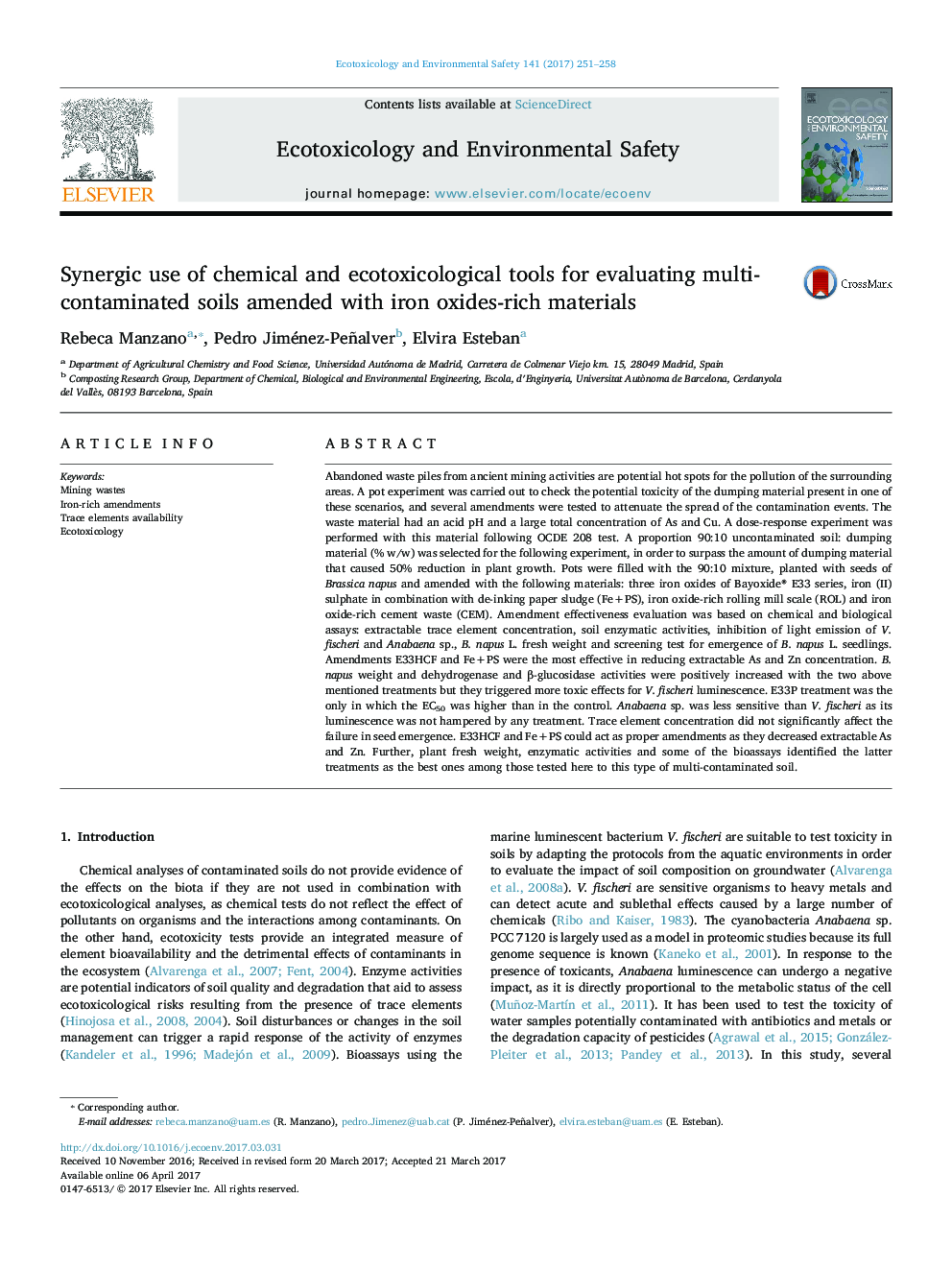| Article ID | Journal | Published Year | Pages | File Type |
|---|---|---|---|---|
| 5747919 | Ecotoxicology and Environmental Safety | 2017 | 8 Pages |
â¢Fe-rich amendments were used in soils with high As concentrations and metals.â¢Extractable As concentration was reduced in every treatment excepting ROL and CEM.â¢Soil enzymes and Vibrio luminescence were reliable indicators of soil functioning.â¢Chemical and biological tests should be combined to evaluate contaminated soil quality.â¢Fe+PS and E33HCF treatments were chosen according to biological and chemical tests.
Abandoned waste piles from ancient mining activities are potential hot spots for the pollution of the surrounding areas. A pot experiment was carried out to check the potential toxicity of the dumping material present in one of these scenarios, and several amendments were tested to attenuate the spread of the contamination events. The waste material had an acid pH and a large total concentration of As and Cu. A dose-response experiment was performed with this material following OCDE 208 test. A proportion 90:10 uncontaminated soil: dumping material (% w/w) was selected for the following experiment, in order to surpass the amount of dumping material that caused 50% reduction in plant growth. Pots were filled with the 90:10 mixture, planted with seeds of Brassica napus and amended with the following materials: three iron oxides of Bayoxide® E33 series, iron (II) sulphate in combination with de-inking paper sludge (Fe+PS), iron oxide-rich rolling mill scale (ROL) and iron oxide-rich cement waste (CEM). Amendment effectiveness evaluation was based on chemical and biological assays: extractable trace element concentration, soil enzymatic activities, inhibition of light emission of V. fischeri and Anabaena sp., B. napus L. fresh weight and screening test for emergence of B. napus L. seedlings. Amendments E33HCF and Fe+PS were the most effective in reducing extractable As and Zn concentration. B. napus weight and dehydrogenase and β-glucosidase activities were positively increased with the two above mentioned treatments but they triggered more toxic effects for V. fischeri luminescence. E33P treatment was the only in which the EC50 was higher than in the control. Anabaena sp. was less sensitive than V. fischeri as its luminescence was not hampered by any treatment. Trace element concentration did not significantly affect the failure in seed emergence. E33HCF and Fe+PS could act as proper amendments as they decreased extractable As and Zn. Further, plant fresh weight, enzymatic activities and some of the bioassays identified the latter treatments as the best ones among those tested here to this type of multi-contaminated soil.
